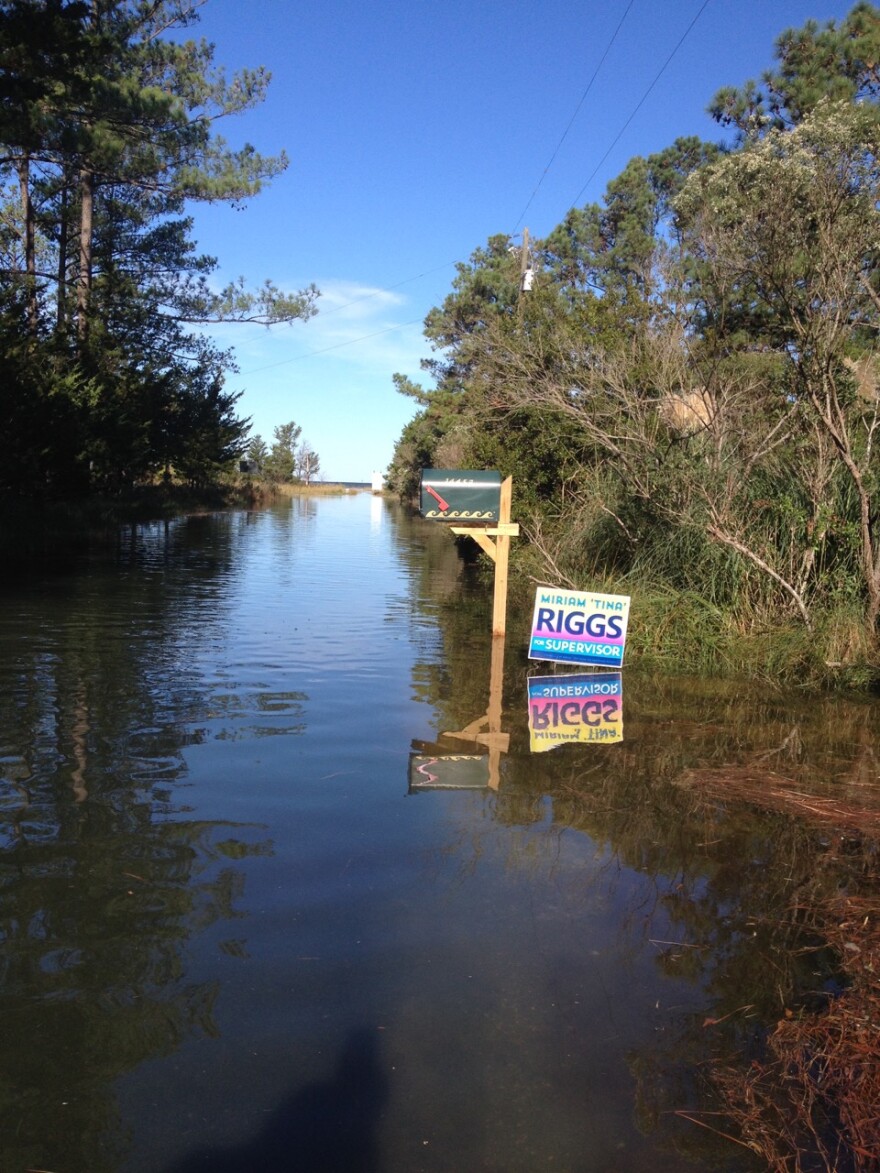Five years ago, scientists said residents of Tangier Island may become among the first climate change refugees in the continental United States.
Others living along the shores of the Chesapeake Bay face a similar fate. And some have decided to live with the rising waters.
“You know I’ve lived here 20 years, even though it’s on sinking land and everything, while I’m here it’s okay,” says Miriam Riggs. For 20 years, Riggs has watched the waters rise around her house and flow slowly up her street.

On the bay in Accomack County, she lives in one of the two lowest places on Virginia’s Eastern Shore. Most of Riggs’ neighbors moved to higher ground, some 60 years ago. "They used to grow onions and field crops here. Across the street they had a watermelon field. One time, this time of year, it was late summer, early fall and the tide came in and all the watermelons started floating away and floating down the street and everything."
When Riggs bought her house she had no idea the property flooded. "It was kind of depressing at first to realize, everything that I had invested in this property is liable to be just washed away at some point," Riggs remembers.
She elevated her house with a FEMA grant. But with each storm or seasonal high tide the water moved higher up her road, silently creeping around her house. Now, she knows when it’s coming, so she parks her car on higher ground. "I had to make a conscious choice over the years, am I going to stay here and cope with this, adapt to it or am I going to move to higher ground."
She shopped for houses inland but decided to stay. An artist, she’s documented changes on her property. Her fresh water pond, where box turtles thrived is now salt water occupied by blue crabs. The walk down to her cove is littered with dead trees, some standing as sentinels of change. In the distance, a bald eagle has built a nest in the remaining tall pine. "I had apple trees in the yard," she points out. "They died."

Elliott White, Jr. is doing post-doctoral research at the University of Virginia on the loss of coastal forests along the Gulf and Atlantic Coasts. Pine, cedar, gum and bald cypress, magnolia and oak make up most of those forests. To illustrate the impact of coastal forest loss in these regions of the U.S., he refers to a NASA study of 16-years of data on the loss of mangrove trees, which are considered coastal defenders. "Just in the U.S. alone, over a similar time period, we’ve lost 6 times as much coastal forest as we’ve lost mangroves globally," White says. "So that kind of, at least for me, paints a very vivid picture of the scale and magnitude of the problem that’s going on."
Not much can be done to stop salt water from killing forests in a natural setting, according to White. "In some ways we have to become comfortable with a certain amount of forest that we are going to lose and just understand it. Addressing climate change is something that is not going to happen in an individual lifetime. We started the momentum and it’s going to take a long time to truly slow it down, so that’s a multigenerational challenge."
Miriam Riggs says she likely won’t be able to pass her property onto her children but remains comfortable with her decision to live with the rising waters. "Anytime that we human beings want to live this close to nature, we have to live with the understanding and the conscious knowledge we are putting ourselves in peril to some extent. And we have to be prepared not to fight nature, not to put up bulkheads or fill in the marsh but we have to embrace the changes that are coming our way."
This report, provided by Virginia Public Radio, was made possible with support from the Virginia Education Association.

